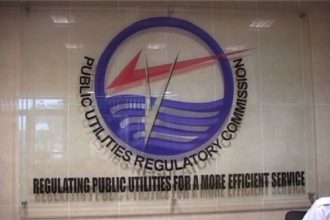There are five trillion pieces of plastic in our oceans. A plastic bag was found 36,000 feet below the surface, at the ocean’s deepest point, the Mariana Trench.
Most of the plastic found at the bottom of the sea by divers (89%) has one thing in common, the Deep Sea Debris Database reported: it’s waste such as plastic bottles and bags, designed to be used just once, then thrown away.
This visible plastic is just the tip of the iceberg. Tests by Newcastle University researchers found that sea creatures living in the deepest reaches of the sea had fragments of plastic in their stomachs and muscles.
Sea creatures are dying across the world as a result of our addiction to plastic, with a sperm whale washing ashore in Spain last year with 28 kilos of plastic in its stomach, including plastic bags, nets and a jerry can. It had died from gastric shock.
The sheer scale of the world’s plastic habit is difficult to comprehend. Every minute of every day, the equivalent of a truckload of plastic enters the world’s oceans, according to Greenpeace statistics.
Waste such as bottles, nappies and beer holders can last for up to 450 years in the environment. Some plastics last for 1,000 years. Sir David Attenborough’s TV series Blue Planet raised awareness of the problem around the world in 2017, with a heartbreaking episode showing albatrosses feeding plastic to their chicks.
Speaking to Prince William at the Davos in Switzerland this year, Sir David called for action against plastic pollution, saying: ‘Every breath of air we take, every mouthful of food that we take, comes from the natural world.
And if we damage the natural world, we damage ourselves.’ Awareness of the issue has got steadily higher, with the UN now campaigning against plastic pollution, seen as one of the world’s most pressing environmental issues. The European Union is set to approve a total ban on one-use plastics such as straws.
But the problem is not getting better: it’s getting worse. A million plastic bottles are bought every minute – and that is forecast to rise another 20% by 2021, driven by the spread of Western lifestyles around the world.
By 2021, the number of plastic bottles sold around the world will hit 583.3 billion, up from 300 billion just over a decade ago. By 2025, the amount of plastic in the ocean could triple, according to a UK Government report entitled Foresight Future of the Sea. Research by the Ellen MacArthur foundation suggests that by 2050, the ocean will contain more plastic by weight than fish.
Andy Sharpless, CEO of ocean conservation non-profit organisation Oceana, says: ‘More plastic was manufactured in the previous decade than in the whole of the last century. Our oceans can feed a billion people every day… but only if we look after them properly. We cannot afford to keep reaching for the plastic bottle without seeing it for the dirty, toxic, pollutant that it really is.’ How it happened The truly shocking part of this man-made crisis is how quickly it has happened. The first fully synthetic plastic, Bakelite, was only shown off in 1907.
Disposable, one-use plastics only came into widespread use after World War II, with large scale industrial production taking off in the 1950s.
The 50s saw the invention of iconic plastic products such as Barbie, Lego and the hula hoop, and the invention of the high-density polyethylene commonly used in today’s plastic drinks bottles.
The cheap, durable bottles rapidly replaced glass as a container for everything except beer and wine. In 2017, 480 billion plastic bottles were sold worldwide.
Plastic bags are, likewise, a recent invention. The disposable polyethylene bag was patented in 1965, and came into widespread use in the 80s.
By the 90s, the amount of plastic waste being generated had tripled in less than two decades, according to UN statistics. As disposable ‘Western’ lifestyles have spread around the world, the habit of one-use plastics has spread with it.

What can we do?
In 1997, sailor and oceanographer Charles Moore encountered what is now known as the Great Pacific Garbage Patch while travelling home after a yacht race.
It covers an area of more than 600,000 square miles, three times the size of France. It’s just one of five swirling ‘vortexes’ of waste in our oceans. Moore resolved to devote his life to dealing with plastic waste. The publicity around the ‘garbage patch’ kick-started a global debate on how to deal with plastic waste.
Bangladesh became the first country to ban plastic bags in 2002, after floods linked to plastic waste. Since then, 54 countries have banned lightweight plastic bags, with a further 32 levying a charge on plastic bags (as happens in Britain).
Many companies have shifted to using ‘recyclable’ or ‘biodegradable’ plastics (which decompose in the environment). But this alone can’t solve the problem. The Rethink Plastic Alliance said that biodegradable plastic ‘distracts from real solutions.’
The current focus on recycling is also not helpful, says Andy Sharpless, CEO of ocean non-profit Oceana. Sharpless says ,’Our focus on recycling is, unfortunately, making the problem worse. Recycling will never stem the flow of plastics into our seas so to focus so exclusively on recycling efforts is a fatal mistake.
‘When plastic is recycled it is in fact more accurate to describe it as being “downcycled” because it also degrades. Plastic bottles, usually made from virgin plastic, if recycled, become textiles or polyester for things likes clothes and carpeting. This change in the quality makes the use of recycled plastic limited.’
The British government has taken several steps to limit plastic consumption, from banning ‘microbeads’ used in cosmetics, to encouraging ‘plastic free’ aisles in supermarkets and packaging-free stores, to widening the scope of the plastic bag ban. Britain currently recycles 57% of the 13 billion plastic bottles used in the country each year (plastic bottles make up 26% of total plastic packaging in the UK).
But since 2012, the recycling rate has plateaued at around 57-58%. Every day, 700,000 plastic bottles are still littered in Britain, and the number of water bottles consumed has doubled, with the average person now using 150 bottles a year.
Governments need to do their part too, Sharpless argues, and big business needs to shoulder more responsibility – as the central problem is the amount of plastic being produced. Sharpless says: ‘We need governments and companies to make a commitment to reducing plastic pollution that reduces plastic production.
A recent Greenpeace report found six of the largest soft drinks companies use a combined average of just 6.6% recycled plastic globally. ‘We must see plastic for what it fundamentally is: a harmful and persistent pollutant that is being dumped at an ever-increasing rate, that sticks around for centuries and is destroying our planet.’
Source: Metro













